Fannie Mae 2009 Annual Report Download - page 8
Download and view the complete annual report
Please find page 8 of the 2009 Fannie Mae annual report below. You can navigate through the pages in the report by either clicking on the pages listed below, or by using the keyword search tool below to find specific information within the annual report.-
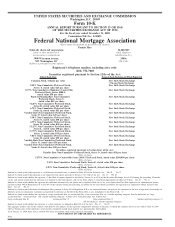 1
1 -
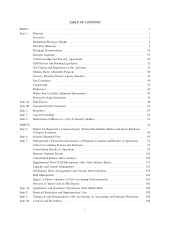 2
2 -
 3
3 -
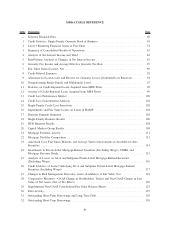 4
4 -
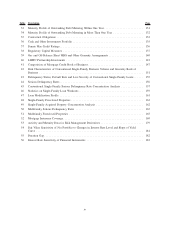 5
5 -
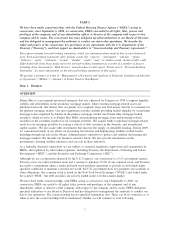 6
6 -
 7
7 -
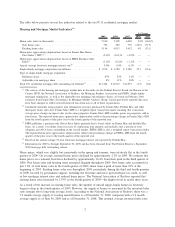 8
8 -
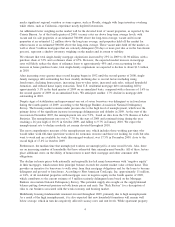 9
9 -
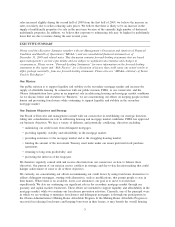 10
10 -
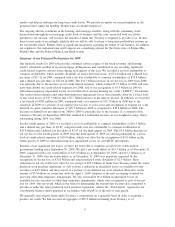 11
11 -
 12
12 -
 13
13 -
 14
14 -
 15
15 -
 16
16 -
 17
17 -
 18
18 -
 19
19 -
 20
20 -
 21
21 -
 22
22 -
 23
23 -
 24
24 -
 25
25 -
 26
26 -
 27
27 -
 28
28 -
 29
29 -
 30
30 -
 31
31 -
 32
32 -
 33
33 -
 34
34 -
 35
35 -
 36
36 -
 37
37 -
 38
38 -
 39
39 -
 40
40 -
 41
41 -
 42
42 -
 43
43 -
 44
44 -
 45
45 -
 46
46 -
 47
47 -
 48
48 -
 49
49 -
 50
50 -
 51
51 -
 52
52 -
 53
53 -
 54
54 -
 55
55 -
 56
56 -
 57
57 -
 58
58 -
 59
59 -
 60
60 -
 61
61 -
 62
62 -
 63
63 -
 64
64 -
 65
65 -
 66
66 -
 67
67 -
 68
68 -
 69
69 -
 70
70 -
 71
71 -
 72
72 -
 73
73 -
 74
74 -
 75
75 -
 76
76 -
 77
77 -
 78
78 -
 79
79 -
 80
80 -
 81
81 -
 82
82 -
 83
83 -
 84
84 -
 85
85 -
 86
86 -
 87
87 -
 88
88 -
 89
89 -
 90
90 -
 91
91 -
 92
92 -
 93
93 -
 94
94 -
 95
95 -
 96
96 -
 97
97 -
 98
98 -
 99
99 -
 100
100 -
 101
101 -
 102
102 -
 103
103 -
 104
104 -
 105
105 -
 106
106 -
 107
107 -
 108
108 -
 109
109 -
 110
110 -
 111
111 -
 112
112 -
 113
113 -
 114
114 -
 115
115 -
 116
116 -
 117
117 -
 118
118 -
 119
119 -
 120
120 -
 121
121 -
 122
122 -
 123
123 -
 124
124 -
 125
125 -
 126
126 -
 127
127 -
 128
128 -
 129
129 -
 130
130 -
 131
131 -
 132
132 -
 133
133 -
 134
134 -
 135
135 -
 136
136 -
 137
137 -
 138
138 -
 139
139 -
 140
140 -
 141
141 -
 142
142 -
 143
143 -
 144
144 -
 145
145 -
 146
146 -
 147
147 -
 148
148 -
 149
149 -
 150
150 -
 151
151 -
 152
152 -
 153
153 -
 154
154 -
 155
155 -
 156
156 -
 157
157 -
 158
158 -
 159
159 -
 160
160 -
 161
161 -
 162
162 -
 163
163 -
 164
164 -
 165
165 -
 166
166 -
 167
167 -
 168
168 -
 169
169 -
 170
170 -
 171
171 -
 172
172 -
 173
173 -
 174
174 -
 175
175 -
 176
176 -
 177
177 -
 178
178 -
 179
179 -
 180
180 -
 181
181 -
 182
182 -
 183
183 -
 184
184 -
 185
185 -
 186
186 -
 187
187 -
 188
188 -
 189
189 -
 190
190 -
 191
191 -
 192
192 -
 193
193 -
 194
194 -
 195
195 -
 196
196 -
 197
197 -
 198
198 -
 199
199 -
 200
200 -
 201
201 -
 202
202 -
 203
203 -
 204
204 -
 205
205 -
 206
206 -
 207
207 -
 208
208 -
 209
209 -
 210
210 -
 211
211 -
 212
212 -
 213
213 -
 214
214 -
 215
215 -
 216
216 -
 217
217 -
 218
218 -
 219
219 -
 220
220 -
 221
221 -
 222
222 -
 223
223 -
 224
224 -
 225
225 -
 226
226 -
 227
227 -
 228
228 -
 229
229 -
 230
230 -
 231
231 -
 232
232 -
 233
233 -
 234
234 -
 235
235 -
 236
236 -
 237
237 -
 238
238 -
 239
239 -
 240
240 -
 241
241 -
 242
242 -
 243
243 -
 244
244 -
 245
245 -
 246
246 -
 247
247 -
 248
248 -
 249
249 -
 250
250 -
 251
251 -
 252
252 -
 253
253 -
 254
254 -
 255
255 -
 256
256 -
 257
257 -
 258
258 -
 259
259 -
 260
260 -
 261
261 -
 262
262 -
 263
263 -
 264
264 -
 265
265 -
 266
266 -
 267
267 -
 268
268 -
 269
269 -
 270
270 -
 271
271 -
 272
272 -
 273
273 -
 274
274 -
 275
275 -
 276
276 -
 277
277 -
 278
278 -
 279
279 -
 280
280 -
 281
281 -
 282
282 -
 283
283 -
 284
284 -
 285
285 -
 286
286 -
 287
287 -
 288
288 -
 289
289 -
 290
290 -
 291
291 -
 292
292 -
 293
293 -
 294
294 -
 295
295 -
 296
296 -
 297
297 -
 298
298 -
 299
299 -
 300
300 -
 301
301 -
 302
302 -
 303
303 -
 304
304 -
 305
305 -
 306
306 -
 307
307 -
 308
308 -
 309
309 -
 310
310 -
 311
311 -
 312
312 -
 313
313 -
 314
314 -
 315
315 -
 316
316 -
 317
317 -
 318
318 -
 319
319 -
 320
320 -
 321
321 -
 322
322 -
 323
323 -
 324
324 -
 325
325 -
 326
326 -
 327
327 -
 328
328 -
 329
329 -
 330
330 -
 331
331 -
 332
332 -
 333
333 -
 334
334 -
 335
335 -
 336
336 -
 337
337 -
 338
338 -
 339
339 -
 340
340 -
 341
341 -
 342
342 -
 343
343 -
 344
344 -
 345
345 -
 346
346 -
 347
347 -
 348
348 -
 349
349 -
 350
350 -
 351
351 -
 352
352 -
 353
353 -
 354
354 -
 355
355 -
 356
356 -
 357
357 -
 358
358 -
 359
359 -
 360
360 -
 361
361 -
 362
362 -
 363
363 -
 364
364 -
 365
365 -
 366
366 -
 367
367 -
 368
368 -
 369
369 -
 370
370 -
 371
371 -
 372
372 -
 373
373 -
 374
374 -
 375
375 -
 376
376 -
 377
377 -
 378
378 -
 379
379 -
 380
380 -
 381
381 -
 382
382 -
 383
383 -
 384
384 -
 385
385 -
 386
386 -
 387
387 -
 388
388 -
 389
389 -
 390
390 -
 391
391 -
 392
392 -
 393
393 -
 394
394 -
 395
395
 |
 |

The table below presents several key indicators related to the total U.S. residential mortgage market.
Housing and Mortgage Market Indicators
(1)
2009 2008 2007 2009 2008
% Change
Home sales (units in thousands). . . . . . . . . . . . . . . . . . . . . . . . . . . . . 5,530 5,398 6,428 2.4% (16.0)%
New home sales . . . . . . . . . . . . . . . . . . . . . . . . . . . . . . . . . . . . . . 374 485 776 (22.9) (37.5)
Existing home sales . . . . . . . . . . . . . . . . . . . . . . . . . . . . . . . . . . . 5,156 4,913 5,652 4.9 (13.1)
Home price appreciation (depreciation) based on Fannie Mae House
Price Index (“HPI”)
(2)
. . . . . . . . . . . . . . . . . . . . . . . . . . . . . . . . . . (2.2)% (10.1)% (4.0)% — —
Home price appreciation (depreciation) based on FHFA Purchase Only
Index
(3)
. . . . . . . . . . . . . . . . . . . . . . . . . . . . . . . . . . . . . . . . . . . . (1.2)% (8.2)% (1.1)% — —
Annual average fixed-rate mortgage interest rate
(4)
. . . . . . . . . . . . . . . . 5.0% 6.0% 6.3% — —
Single-family mortgage originations (in billions) . . . . . . . . . . . . . . . . . $ 1,976 $ 1,580 $ 2,380 25.1 (33.6)
Type of single-family mortgage origination:
Refinance share . . . . . . . . . . . . . . . . . . . . . . . . . . . . . . . . . . . . . . 67% 52% 51% — —
Adjustable-rate mortgage share . . . . . . . . . . . . . . . . . . . . . . . . . . . 4% 11% 20% — —
Total U.S. residential mortgage debt outstanding (in billions)
(5)
. . . . . . . $11,764 $11,915 $11,957 (1.3) (0.4)
(1)
The sources of the housing and mortgage market data in this table are the Federal Reserve Board, the Bureau of the
Census, HUD, the National Association of Realtors, the Mortgage Bankers Association and FHFA. Single-family
mortgage originations, as well as the adjustable-rate mortgage and refinance shares, are based on February 2010
estimates from Fannie Mae’s Economics & Mortgage Market Analysis Group. Certain previously reported data may
have been changed to reflect revised historical data from any or all of these organizations.
(2)
Calculated internally using property data information on loans purchased by Fannie Mae, Freddie Mac and other
third-party home sales data. Fannie Mae’s HPI is a weighted repeat transactions index, meaning that it measures
average price changes in repeat sales on the same properties. Fannie Mae’s HPI excludes prices on properties sold in
foreclosure. The reported home price appreciation (depreciation) reflects the percentage change in Fannie Mae’s HPI
from the fourth quarter of the prior year to the fourth quarter of the reported year.
(3)
FHFA publishes a purchase-only House Price Index quarterly that is based solely on Fannie Mae and Freddie Mac
loans. As a result, it excludes loans in excess of conforming loan amounts and includes only a portion of total
subprime and Alt-A loans outstanding in the overall market. FHFA’s HPI is also a weighted repeat transactions index.
The reported home price appreciation (depreciation) reflects the percentage change in FHFA’s HPI from the fourth
quarter of the prior year to the fourth quarter of the reported year.
(4)
Based on the annual average 30-year fixed-rate mortgage interest rate reported by Freddie Mac.
(5)
Information for 2009 is through September 30, 2009 and has been obtained from The Federal Reserve’s September
2009 mortgage debt outstanding release.
Home prices, which rose slightly but consistently in the spring and summer, were relatively flat in the fourth
quarter of 2009. On average, national home prices declined by approximately 2.2% in 2009. We estimate that
home prices on a national basis have declined by approximately 16.4% from their peak in the third quarter of
2006. New home sales and housing starts remained sluggish throughout 2009. New home sales accounted for
just 5.6% of total home sales in the fourth quarter of 2009, down from a peak of more than 19% at the
beginning of 2005. Existing home sales rose throughout 2009, particularly during the third and fourth quarters
of 2009, boosted by government support, including the first-time and move up homebuyer tax credit, as well
as low mortgage interest rates and reduced home prices. The National Association of Realtors reported that
existing home sales increased by 13.9% in the fourth quarter of 2009—the highest level in nearly three years.
As a result of the increase in existing home sales, the number of unsold single-family homes in inventory
began to drop in the fourth quarter of 2009. However, the supply of homes as measured by the inventory/sales
ratio remains above long-term average levels. According to the National Association of Realtors, there was a
7.2 month average supply of existing unsold homes as of December 31, 2009, compared with a 9.4 month
average supply as of June 30, 2009 and as of December 31, 2008. This national average inventory/sales ratio
3
